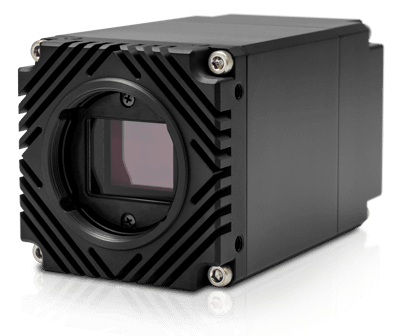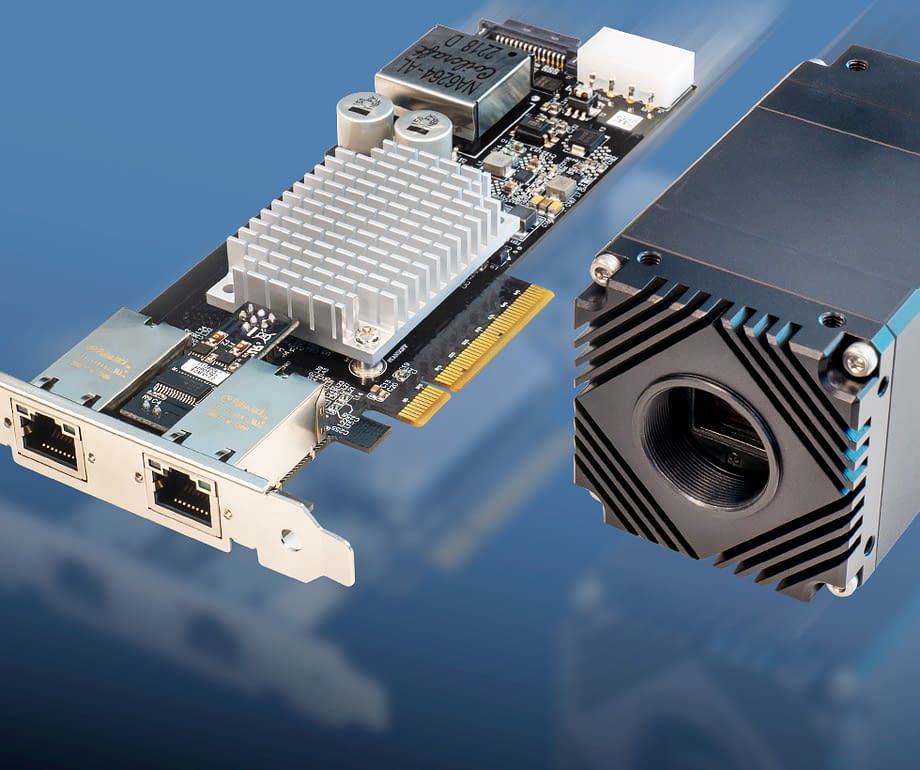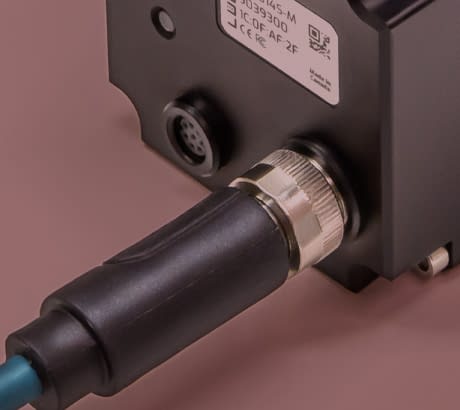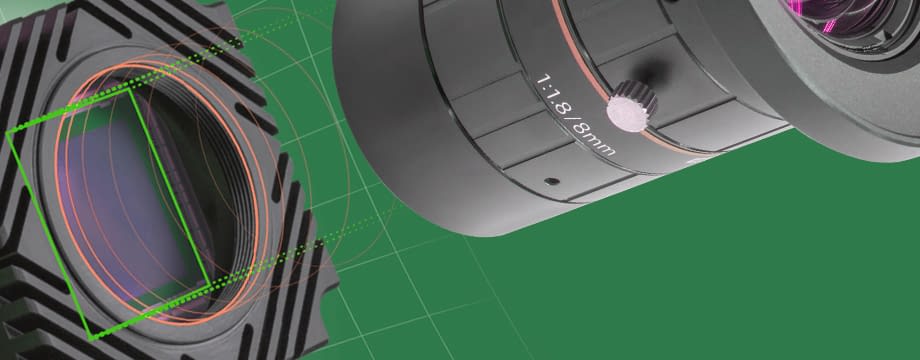10 Gigabit Ethernet with Power over Ethernet (PoE) paired with high quality global shutter and rolling shutter CMOS sensors allows the Atlas10 to achieve superior imaging performance with fast frame rates in an compact industrial camera. With the option to reduce the region of interest (ROI), along with binning and decimation options, users can unlock even higher frame rates on the Atlas10. All Atlas10 models support Remote Direct Memory Access (RDMA), when paired with one of LUCID’s RDMA HCA network interface cards, to provide zero-copy data transfer, bypassing the CPU and OS for more efficient and reliable camera streaming.
Atlas10 10GigE Cameras - Reliable 1.2GB/s Streaming with RDMA

Explore our Atlas10 - 10GigE Camera Models
| Model | MP | Resolution | FPS | Sensor | Format | Pixel Size | Shutter | Lens Mount | Chroma | Interface |
|---|---|---|---|---|---|---|---|---|---|---|
| ATX650G | 65.0 MP | 9344 x 7000 px | 14.1 FPS | Gpixel GMAX3265 CMOS | 2.3" | 3.2 µm | Global | TFL-II (M48 x 0.75) | Mono / Color | 10GigE, M12 |
| ATX470S | 47.0 MP | 8232 x 5588 px | 23.2 fps | Sony IMX492 CMOS | 1.4-Type | 2.315 µm | Rolling | TFL (M35 x 0.75) / No Lens Mount | Mono / Color | 10GigE, M12 |
| ATX314S | 31.4 MP | 6464 x 4852 px | 35 fps | Sony IMX342 CMOS | APS-C 27.9mm | 3.45 µm | Global | TFL (M35 x 0.75) / No Lens Mount | Mono / Color | 10GigE, M12 |
| ATX245S | 24.5 MP | 5320 x 4600 px | 45.4 fps | Sony IMX530 CMOS | 1.2" | 2.74 µm | Global | TFL / C-Mount | Mono / Color | 10GigE, M12 |
| ATX204S | 20.4 MP | 4504 x 4504 px | 54.1 fps | Sony IMX531 CMOS | 1.1" | 2.74 µm | Global | C-Mount | Mono / Color | 10GigE, M12 |
| ATX162S | 16.2 MP | 5320 x 3032 px | 76.1 fps | Sony IMX532 CMOS | 1.1" | 2.74 µm | Global | C-Mount | Mono / Color | 10GigE, M12 |
| ATX124S | 12.3 MP | 4096 x 3000 px | 89.7 fps | Sony IMX535 CMOS | 1/1.1″ | 2.74 µm | Global | C-Mount | Mono / Color | 10GigE, M12 |
| ATX081S | 8.1 MP | 2840 x 2840 px | 136.7 fps | Sony IMX536 CMOS | 2/3″ | 2.74 µm | Global | C-Mount | Mono / Color | 10GigE, M12 |
| ATX051S | 5.0 MP | 2448 x 2048 px | 205 fps | Sony IMX537 CMOS | 1/1.8 | 2.74 µm | Global | C-Mount | Mono / Color | 10GigE, M12 |

Atlas10 UV 10GigE Model
The Atlas10 UV 10GigE (10GBASE-T) PoE+ camera, featuring the high-sensitivity Sony UV 8.1 MP IMX487 sensor, is capable of capturing images across the ultraviolet (UV) light spectrum range (200 to 400nm). To learn more, visit our UV landing page.
| Model | MP | Resolution | FPS | Sensor | Format | Pixel Size | Shutter | Lens Mount | Chroma | Interface |
|---|---|---|---|---|---|---|---|---|---|---|
 ATX081S-UC ATX081S-UC | 8.1 MP | 2840 x 2840 px | 136.8 fps | Sony IMX487 CMOS | 2/3″ | 2.74 µm | Global | C-Mount | Mono (UV + VIS) | 10GigE, M12 |

Atlas10 Right-Angle 10GigE Model
The Atlas10 Right Angle model offers a shorter design than the standard model, measuring just 70.5mm in length compared to 95.5mm. This compact size also provides an industrial right-angle solution for those applications where space is limited.
| Model | MP | Resolution | FPS | Sensor | Format | Pixel Size | Shutter | Lens Mount | Chroma | Interface |
|---|---|---|---|---|---|---|---|---|---|---|
| ATX204S-R | 20.4 MP | 4504 x 4504 px | 54.1 fps | Sony IMX531 CMOS | 1.1" | 2.74 µm | Global | C-Mount | Mono / Color | 10GigE, M12 |
RDMA stands for Remote Direct Memory Access. RDMA lets Atlas10 cameras send image data directly to a PC’s main memory without involving the CPU or OS. This means the CPU and OS no longer need to spend resources managing the data transmission, freeing up CPU resources for other tasks. For more information on how RDMA works for Atlas10 cameras please download our RDMA White Paper PDF.
• Atlas10 Camera
• Compatible RDMA HCA network interface card:
1) LUCID 2-CH 10G/1G RDMA PoE+ Host Channel Adapter (HCA) Network Card (P/N: PCIE-10GPOE2-LUCID)
2) Broadcom 2-CH 10G/1G RDMA Host Channel Adapter (HCA) Network Card (P/N: PCIE-10GETH2-BC)
(Please note the above RDMA cards require a PCIe Generation 3 x8 slot in the Host PC)
• M12 to RJ45 Cat6a cables. Click here to view a complete list of cables.
• M8 GPIO Power supply (needed if you purchase non-PoE RDMA NIC). Click here to view M8 GPIO Power Supply
LUCID’s implementation of RDMA is compatible only with Atlas10 – 10GigE cameras (all Atlas10 camera models are RDMA ready) and the RDMA Host Channel Adapter (HCA) NICs available on our webstore.
Host PC:
Windows 10 (64-bit) or Windows 11 (64-bit)
Arena Software Development Kit:
Arena SDK for Windows version 1.0.41.8 or higher
Atlas10 Camera Firmware:
For existing Atlas10 users, you will need to upgrade your Atlas10 camera’s firmware with version 1.20.0.0 or higher. The following Atlas10 firmware support RDMA:
ATX051S_1.20.0.0_Firmware.zip
ATX081S_1.20.0.0_Firmware.zip
ATX081S-UV_1.20.0.0_Firmware.zip
ATX124S_1.20.0.0_Firmware.zip
ATX162S_1.20.0.0_Firmware.zip
ATX204S_1.20.0.0_Firmware.zip
ATX245S_1.21.0.0_Firmware.zip
ATX314S_1.20.0.0_Firmware.zip
ATX470S_1.22.0.0_Firmware.zip
ATX650G_1.20.0.0_Firmware.zip
Visit our Downloads Hub to download the latest Arena SDK and Atlas10 Firmware.
LUCID’s implementation of RDMA provides a cost-effective solution to enabling zero-copy image transfer between camera and host PC.
Current users of Atlas10 cameras can download and install the latest camera firmware with RDMA support for free. Our Arena SDK is also available for free. Please visit our Downloads Hub to download the files.
Atlas10 camera prices range from $1950 (5MP model) up to $10,950 (65 MP model) USD depending on the specific model. All Atlas10 cameras support 10GigE data bandwidth with Power over Ethernet (PoE) using standard Cat6A cabling. Our dual-port RDMA 10GigE HCA network interface cards are priced the same as our non-RDMA 10GigE network interface cards at $400 (PoE+ card, PCIE-10GPOE2-LUCID) and $275 (Non-PoE card, PCIE-10GETH2-BC).
The drivers for the RDMA HCA network interface cards (LUCID’s and Broadcoms) are packaged and installed with Arena SDK. The Arena SDK installer will install and configure the NIC driver and SPI driver.
Yes, all Atlas10 cameras and all 10GigE network cards (RDMA and non-RDMA NICs) support UDP data transfers. Please note that UDP is a different data transfer protocol than RDMA and the two cannot be enabled at the same time.
Yes, TCP works with the RDMA cards and new camera firmware. Please note that TCP is a different data transfer protocol than RDMA and the two cannot be enabled at the same time. RDMA enables similar reliability features as TCP, providing flow control and packet retransmission on the hardware level (managed by the camera and RDMA HCA network card. No CPU or OS resources needed for these reliability features).
Currently, LUCID has not qualified any specific network switches with Atlas10 RDMA cameras and our RDMA HCA network cards. We plan to test more switches in the near future.
Because everyone’s application is different, it is impossible to provide an exact percent of CPU reduction once RDMA is enabled. Results will vary depending on how many Atlas10 cameras are used, the Host PC’s CPU and hardware configuration, and OS’ configuration. However, users can expect a substantial reduction in CPU usage during RDMA streaming compared to conventional UDP streaming.
LUCID’s own internal testing results:
-Testing on an i9-10900x with 128GB of memory, our tests show a CPU usage reduction from 5.4% (non-RDMA) to 0.08% (RDMA) with 4 Atlas10 cameras streaming.
-Testing on an i3-i3-10300 with 32GB of memory, our tests show a CPU usage reduction from 21% (non-RDMA) to 3% (RDMA) with 2 Atlas10 cameras streaming.
As an active member of the GigE Vision standards committee, LUCID supports the integration of RDMA technology into the next release of the GigE Vision standard. LUCID believes standardization of RDMA technology will accelerate the industry adoption of faster Ethernet transfer rates such as 10GigE, 25GigE and beyond.
No, RDMA is not available for LUCID’s 1GigE, 2.5GigE, or 5GigE cameras. We do not have plans to make it available for these interfaces. RDMA is only available with Atlas10 – 10GigE cameras.
Ultra High Resolution Sensors, Exceptional Imaging Quality
The Atlas10 – 10GigE cameras feature high resolution sensors with exceptional imaging quality. The camera design maximizes and maintains imaging performance within a wide operating temperature of -20 to 50°C ambient. Our strict quality control during manufacturing ensures all units perform within our EMVA 1288 imaging quality targets.
Atlas10 47MP ATX470S
8192 x 5556px, Sony IMX492
85.5%
7.83 e-
65.4 dB
15655 e-
Atlas10 65MP ATX650G
9344 x 7000px, Gpixel GMAX3265
62.5%
5.38 e-
64.5 dB
9957 e-
EMVA 1288 is the Standard for Measurement and Presentation of Specifications for Machine Vision Sensors and Cameras. For more information of the EMVA 1288 standard please visit http://www.emva.org/standards-technology/emva-1288/
Active Sensor Alignment
10Gbps - 10x GigE Vision Speeds with Power over Ethernet (PoE+)
Power Over Ethernet
Power over Ethernet (PoE+, IEEE 802.3at) allows both data and power over one M12 Ethernet cable, this adds value by reducing the number of cables needed and minimizing future maintenance.

100% Compliant
The Atlas10 is compatible with 3rd party software and hardware vendors that are GigE Vision compliant. This ensures reliable and consistent operations across different vendors.
Secure and Rugged M12 and M8 Connectors
The M12 Ethernet and M8 GPIO connectors are designed to withstand the demands of an industrial environment. The M12 Ethernet connector is standardized as IEC 61076-2-109 and is included in the GigE Vision standard. Its rugged design allows for resistance against strong vibration and protection against electrical interference. The secure 8 pin M8 GPIO connector is standardized to IEC 61076-2-104 with an opto-coupled input line, an opto-coupled output line, and two bidirectional lines. M12 Ethernet and M8 GPIO connections are the superior choice for demanding applications such as industrial, automotive, agriculture, process control, food and beverage, and medical applications.
 Support Center
Support Center







